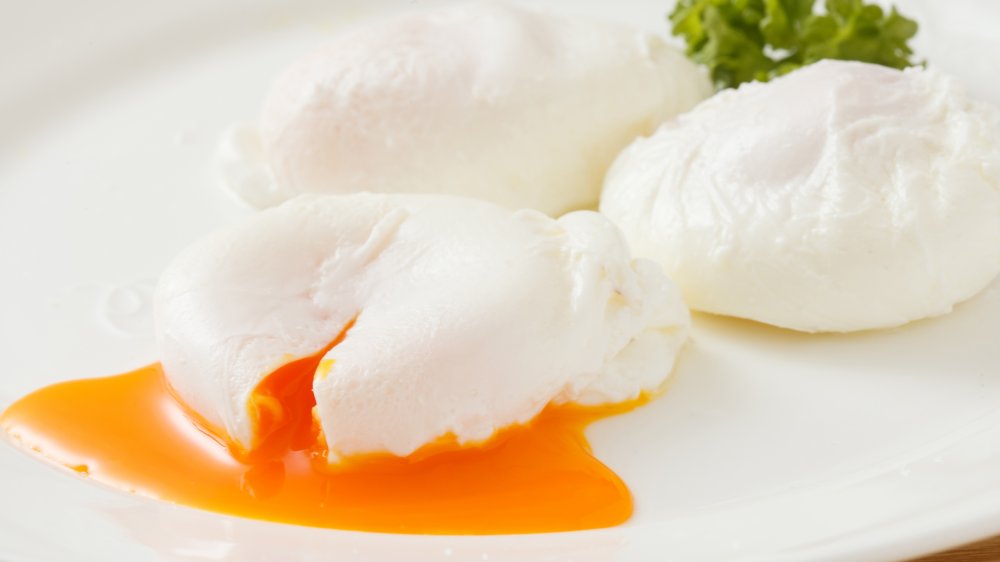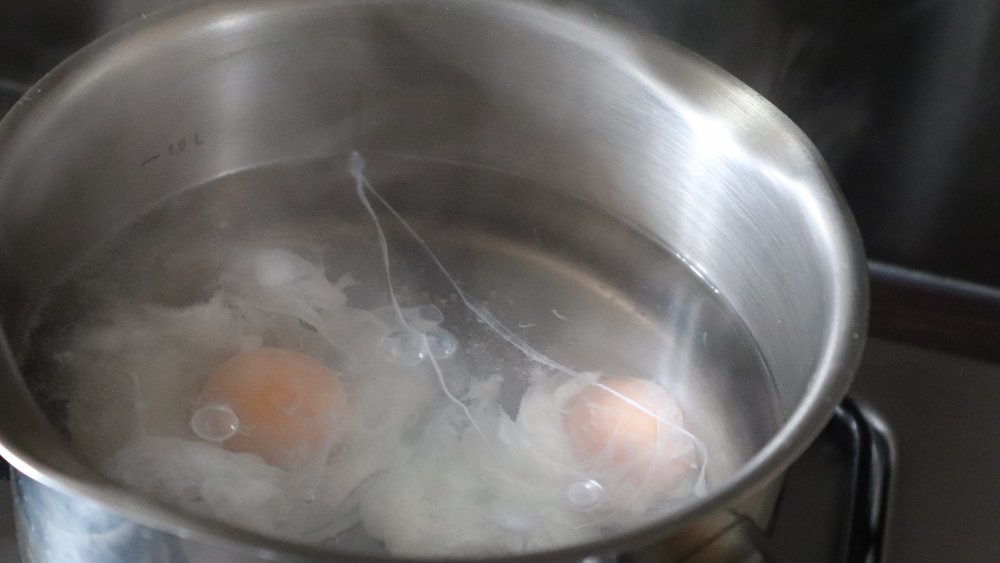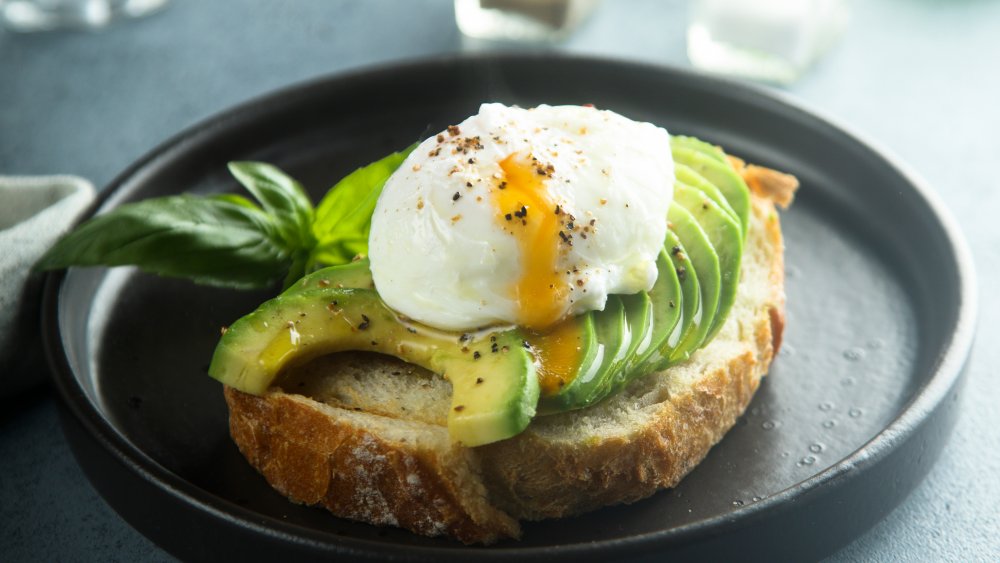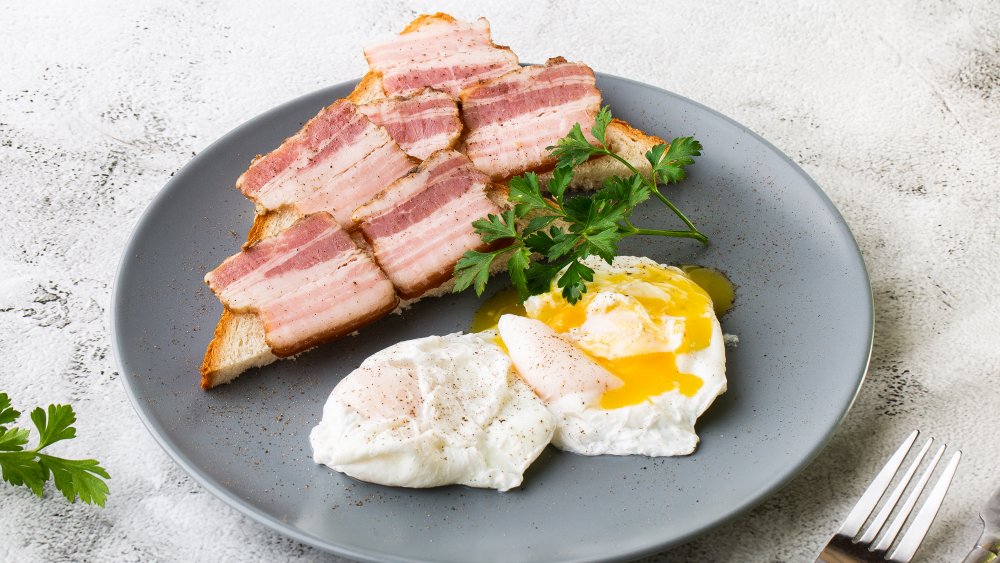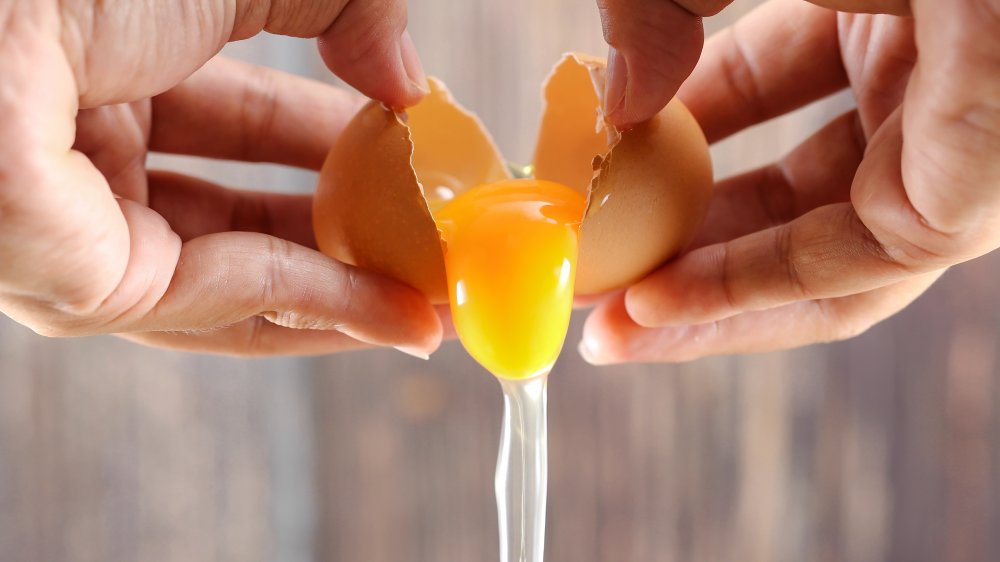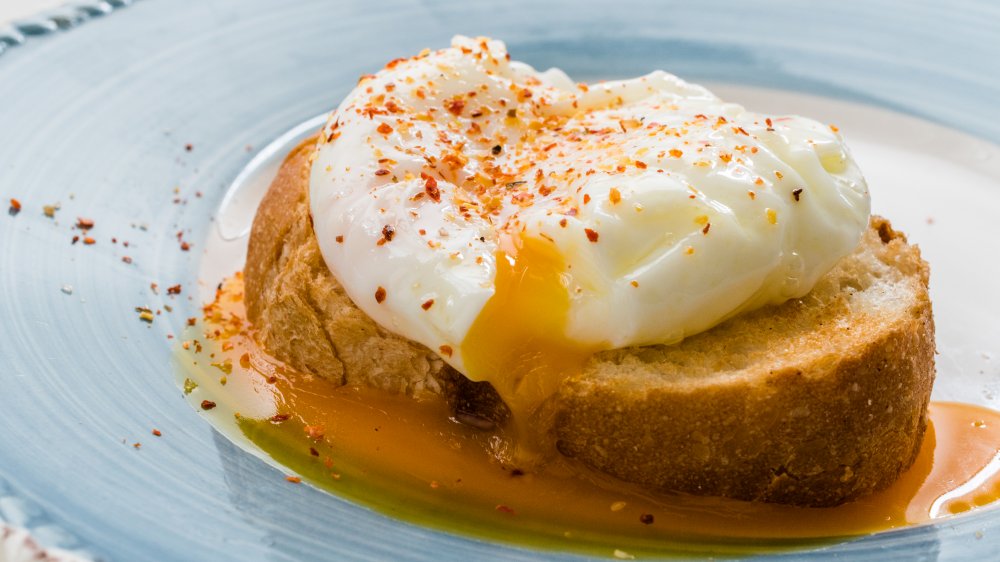The Biggest Mistake You're Making With Poached Eggs
Poached eggs are such a simple dish, and yet, when cooked right, they can be sheer perfection, somehow combining the best elements of boiled and fried eggs and managing to transcend both. Not to mention, a perfect poached egg is crucial to creating that queen among brunch dishes, eggs Benedict, although it can also enhance anything from avocado toast to a salad.
The problem with poached eggs is that while the cooking process itself is not overly complex, it's still surprisingly easy to screw up. If not cooked just right, the yolks can either come out too hard or just burst into a squishy mess long before they meet your fork, and as for the whites... these can just disappear into ghostly wisps floating forlornly in the cooking water.
While you may have to crack a few eggs to perfect your poaching technique in your quest to right all the egg-cooking wrongs you've been making, eggs are only pennies apiece so it's worth spending a little time practicing. Before you get started, though, you'll want to make sure to avoid the biggest egg-poaching mistake you can make: not using enough water.
Poached eggs need their space
In order to poach correctly, an egg needs a lot of room to float, and it can't be crowded. You'll first need to make sure you select the right size pan. A 10-gallon stock pot won't be necessary, but Rick Martinez, the associate food editor with Bon Appétit, suggests using a deep, wide skillet that's at least three inches tall. The height requirement is actually a must-have, since Martinez also notes that poached eggs require three inches of water in which to cook. He says you don't want too much more water, because that might make the egg difficult to remove, but less than three inches and it's just not going to set up right since there won't be room to perform the signature swirl that's such an important part of egg poaching.
Don't skip the swirl with poached eggs
Swirling the water? Uh oh, don't say you've been forgetting to do that step, too. Before you add your egg to the poaching pan, you'll need to use a fork, spoon, or whisk to swirl the simmering water gently until it creates a vortex. The water's circular motion will help to keep both yolk and white together as the egg starts to cook. If you skip the swirl, the raw egg will just drop to the bottom of the pan and start dispersing into the water like a particularly bland, and gross, version of egg drop soup.
Watch the water temperature when poaching eggs
As for water temperature, you don't want the water boiling hot, since the eggs just won't poach right if they're fully cooked within seconds of being dropped in the pot. On the other hand, the cooking water shouldn't be too cold, either. What you're looking for is a nice simmer, which is that gentle bubbling that comes before a rolling boil (about 195 degrees Fahrenheit, according to Seasoned Advice on Stack Exchange). The water is going to lose some heat once the cold egg hits it, so it needs to be hot enough to compensate for that — although you can (and should) help to offset this temperature drop by using eggs that have been out of the refrigerator long enough to reach room temperature.
Don't break the eggs directly into the pot
As a general rule, whenever you're baking with eggs, it's best not to break them directly into the batter, since if you get a bad one, doing so is going to spoil your entire recipe. Instead, it's advisable to break each egg first into a cup or or small bowl. When you're poaching eggs, this method is still something you should be employing, since if you break an egg directly into the cooking water, the egg will separate with the yolk dropping to the bottom in much the same way that it will if you fail to swirl the cooking water.
An added benefit of breaking the eggs before you add them to the pot is that this can help you poach a bunch of eggs more quickly, assembly-line style. Hey, you never know when your 50 closest friends are going to drop by for brunch!
Add some vinegar when poaching eggs
In order to get your poached egg whites to set up nice and firm around that tender yolk, it helps to add some vinegar to your cooking water. Just plain old distilled white vinegar works just fine. No need to use a pricy flavored or specialty vinegar, since the taste is just going to be diluted by the water in the pan — you'll only be adding 1/4 cup of vinegar to a pot full of water, after all.
Still, in case there is any lingering vinegar taste, you should always rinse off your poached eggs after pulling them from the pot. This is fairly simple to do — just keep a bowl of warm water next to the stove, then use a slotted spoon to give your egg a quick dip in the rinse water before serving.
